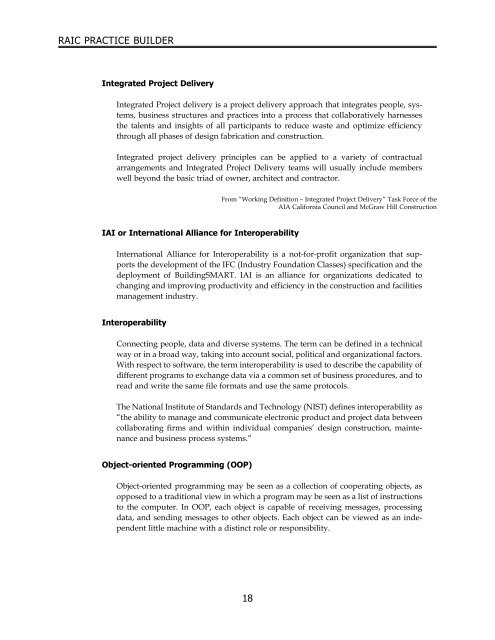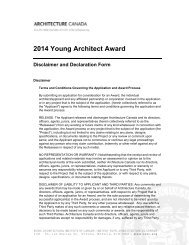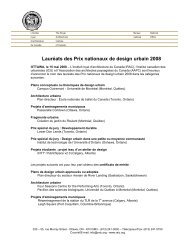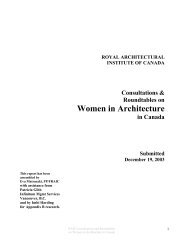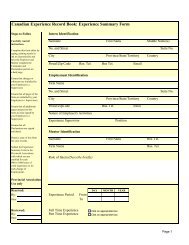BIM - Practice Builder - Royal Architectural Institute of Canada
BIM - Practice Builder - Royal Architectural Institute of Canada
BIM - Practice Builder - Royal Architectural Institute of Canada
Create successful ePaper yourself
Turn your PDF publications into a flip-book with our unique Google optimized e-Paper software.
RAIC PRACTICE BUILDER<br />
Integrated Project Delivery<br />
Integrated Project delivery is a project delivery approach that integrates people, systems,<br />
business structures and practices into a process that collaboratively harnesses<br />
the talents and insights <strong>of</strong> all participants to reduce waste and optimize efficiency<br />
through all phases <strong>of</strong> design fabrication and construction.<br />
Integrated project delivery principles can be applied to a variety <strong>of</strong> contractual<br />
arrangements and Integrated Project Delivery teams will usually include members<br />
well beyond the basic triad <strong>of</strong> owner, architect and contractor.<br />
IAI or International Alliance for Interoperability<br />
From “Working Definition – Integrated Project Delivery” Task Force <strong>of</strong> the<br />
AIA California Council and McGraw Hill Construction<br />
International Alliance for Interoperability is a not-for-pr<strong>of</strong>it organization that supports<br />
the development <strong>of</strong> the IFC (Industry Foundation Classes) specification and the<br />
deployment <strong>of</strong> BuildingSMART. IAI is an alliance for organizations dedicated to<br />
changing and improving productivity and efficiency in the construction and facilities<br />
management industry.<br />
Interoperability<br />
Connecting people, data and diverse systems. The term can be defined in a technical<br />
way or in a broad way, taking into account social, political and organizational factors.<br />
With respect to s<strong>of</strong>tware, the term interoperability is used to describe the capability <strong>of</strong><br />
different programs to exchange data via a common set <strong>of</strong> business procedures, and to<br />
read and write the same file formats and use the same protocols.<br />
The National <strong>Institute</strong> <strong>of</strong> Standards and Technology (NIST) defines interoperability as<br />
“the ability to manage and communicate electronic product and project data between<br />
collaborating firms and within individual companies’ design construction, maintenance<br />
and business process systems.”<br />
Object-oriented Programming (OOP)<br />
Object-oriented programming may be seen as a collection <strong>of</strong> cooperating objects, as<br />
opposed to a traditional view in which a program may be seen as a list <strong>of</strong> instructions<br />
to the computer. In OOP, each object is capable <strong>of</strong> receiving messages, processing<br />
data, and sending messages to other objects. Each object can be viewed as an independent<br />
little machine with a distinct role or responsibility.<br />
18


